 Backend Development
Backend Development
 Python Tutorial
Python Tutorial
 In-depth understanding of Python data processing and visualization
In-depth understanding of Python data processing and visualization
In-depth understanding of Python data processing and visualization
This article brings you relevant knowledge about python, which mainly introduces related issues about data processing and visualization, including the preliminary use of NumPy, the use of Matplotlib package and data statistics Visual display, etc. I hope it will be helpful to everyone.
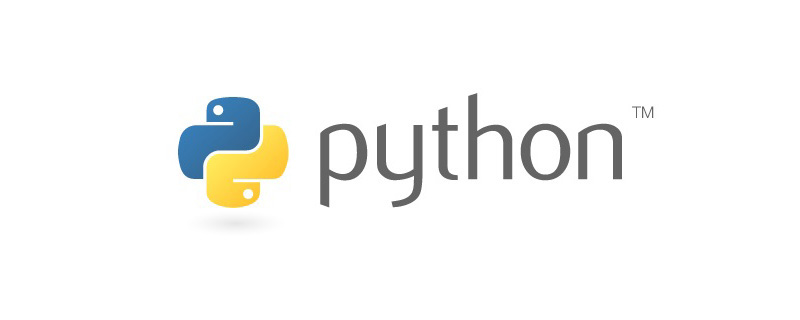
Recommended learning: python tutorial
1. Preliminary use of NumPy
Tables are general representations of data form, but it is incomprehensible to the machine, that is, it is unrecognizable data, so we need to adjust the form of the table.
The commonly used machine learning representation is a data matrix. 
We observed this table and found that there are two types of attributes in the matrix, one is numeric type and the other is Boolean type. So we will now build a model to describe this table:
# 数据的矩阵化import numpy as np data = np.mat([[1,200,105,3,False],[2,165,80,2,False],[3,184.5,120,2,False], [4,116,70.8,1,False],[5,270,150,4,True]])row = 0for line in data: row += 1print( row )print(data.size)print(data)
The first line of code here means introducing NumPy and renaming it to np. In the second line, we use the mat() method in NumPy to create a data matrix, and row is the variable introduced to calculate the number of rows.
The size here means a table of 5*5. You can see the data by printing the data directly: 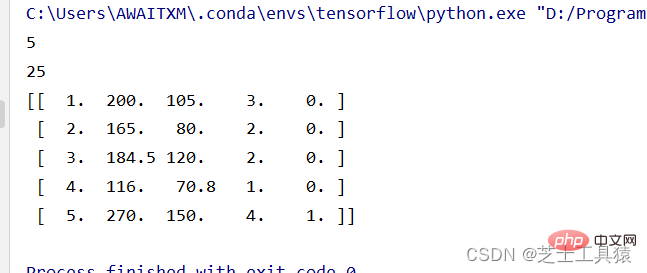
2. Use of Matplotlib package – graphical data processing
Let’s still look at the top table. The second column is the difference in housing prices. It is not easy to see the difference intuitively (because there are only numbers), so we hope to draw it (Research The method for numerical differences and anomalies is to draw the distribution of data ):
import numpy as npimport scipy.stats as statsimport pylab data = np.mat([[1,200,105,3,False],[2,165,80,2,False],[3,184.5,120,2,False], [4,116,70.8,1,False],[5,270,150,4,True]])coll = []for row in data: coll.append(row[0,1])stats.probplot(coll,plot=pylab)pylab.show()
The result of this code is to generate a graph: 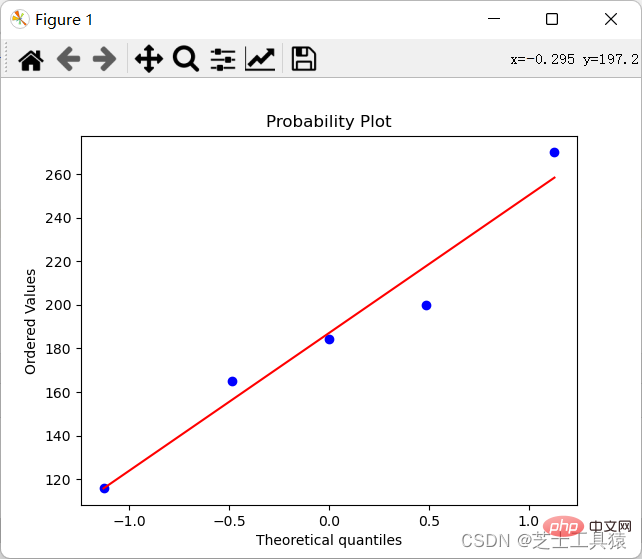
So that we can clearly see it There is a difference.
The requirement for a coordinate chart is to show the specific values of data through different rows and columns.
Of course, we can also display the coordinate diagram: 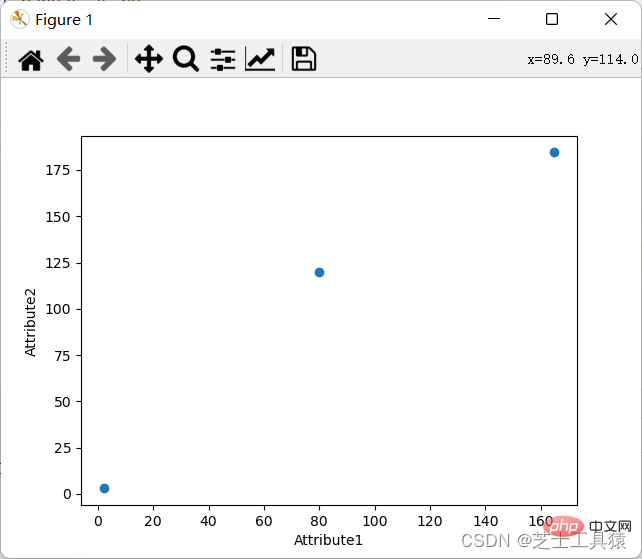
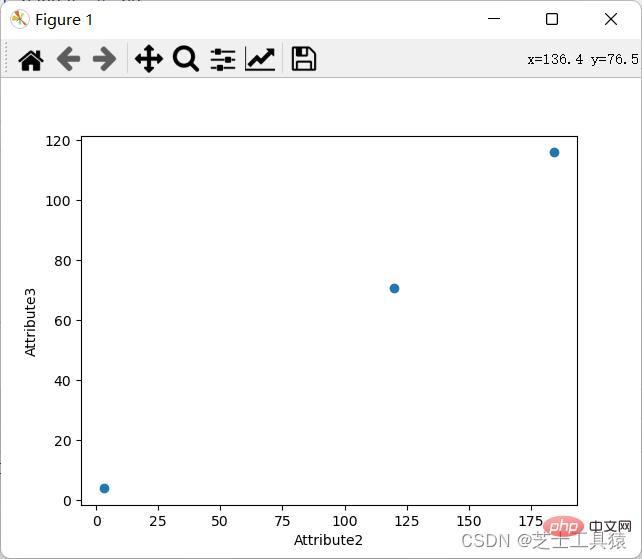
3. Deep learning theoretical method – similarity calculation (can be skipped)
Similarity There are many calculation methods, and we choose the two most commonly used ones, namely Euclidean similarity and cosine similarity calculation.
1. Similarity calculation based on Euclidean distance
Euclidean distance is used to represent the true distance between two points in three-dimensional space. We all know the formula, but we rarely hear the name: 
So let’s take a look at its practical application:
This table shows the ratings of items by three users: 
d12 represents the similarity between user 1 and user 2, then there is: 
Similarly, d13: 
It can be seen that user 2 is more similar to User 1 (the smaller the distance, the greater the similarity).
2. Similarity calculation based on cosine angle
The starting point for the calculation of cosine angle is the difference in the included angle. 

It can be seen that compared to user 3, user 2 is more similar to user 1 (the more similar the two targets are, the smaller the angle formed by their line segments)
4. Visual display of data statistics (taking precipitation in Bozhou City as an example)
Quartiles of data
Quartiles are the statistical median scores A kind of digit, that is, the data is arranged from small to large, and then divided into four equal parts. The data at the three dividing points is the quartile.
First quartile (Q1), also called lower quartile;
Second quartile (Q1), also called median;
Third quartile (Q1), also called lower quartile;
The gap between the third quartile and the first quartile is also called the four-point gap (IQR).
若n为项数,则:
Q1的位置 = (n+1)*0.25
Q2的位置 = (n+1)*0.50
Q3的位置 = (n+1)*0.75
四分位示例:
关于这个rain.csv,有需要的可以私我要文件,我使用的是亳州市2010-2019年的月份降水情况。
from pylab import *import pandas as pdimport matplotlib.pyplot as plot
filepath = ("C:\\Users\\AWAITXM\\Desktop\\rain.csv")# "C:\Users\AWAITXM\Desktop\rain.csv"dataFile = pd.read_csv(filepath)summary = dataFile.describe()print(summary)array = dataFile.iloc[:,:].values
boxplot(array)plot.xlabel("year")plot.ylabel("rain")show()以下是plot运行结果: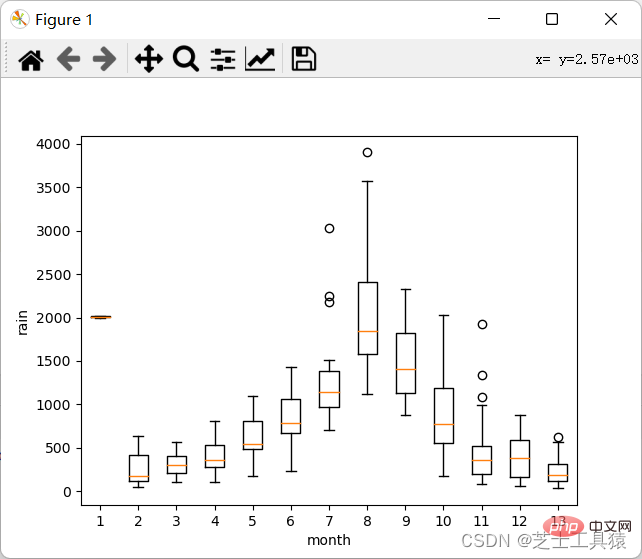
这个是pandas的运行
这里就可以很清晰的看出来数据的波动范围。
可以看出,不同月份的降水量有很大差距,8月最多,1-4月和10-12月最少。
那么每月的降水增减程度如何比较?
from pylab import *import pandas as pdimport matplotlib.pyplot as plot
filepath = ("C:\\Users\\AWAITXM\\Desktop\\rain.csv")# "C:\Users\AWAITXM\Desktop\rain.csv"dataFile = pd.read_csv(filepath)summary = dataFile.describe()minRings = -1maxRings = 99nrows = 11for i in range(nrows):
dataRow = dataFile.iloc[i,1:13]
labelColor = ( (dataFile.iloc[i,12] - minRings ) / (maxRings - minRings) )
dataRow.plot(color = plot.cm.RdYlBu(labelColor),alpha = 0.5)plot.xlabel("Attribute")plot.ylabel(("Score"))show()结果如图:
可以看出来降水月份并不规律的上涨或下跌。
那么每月降水是否相关?
from pylab import *import pandas as pdimport matplotlib.pyplot as plot
filepath = ("C:\\Users\\AWAITXM\\Desktop\\rain.csv")# "C:\Users\AWAITXM\Desktop\rain.csv"dataFile = pd.read_csv(filepath)summary = dataFile.describe()corMat = pd.DataFrame(dataFile.iloc[1:20,1:20].corr())plot.pcolor(corMat)plot.show()结果如图:
可以看出,颜色分布十分均匀,表示没有多大的相关性,因此可以认为每月的降水是独立行为。
今天就记录到这里了,我们下次再见!希望本文章对你也有所帮助。
推荐学习:python学习教程
The above is the detailed content of In-depth understanding of Python data processing and visualization. For more information, please follow other related articles on the PHP Chinese website!

Hot AI Tools

Undresser.AI Undress
AI-powered app for creating realistic nude photos

AI Clothes Remover
Online AI tool for removing clothes from photos.

Undress AI Tool
Undress images for free

Clothoff.io
AI clothes remover

Video Face Swap
Swap faces in any video effortlessly with our completely free AI face swap tool!

Hot Article

Hot Tools

Notepad++7.3.1
Easy-to-use and free code editor

SublimeText3 Chinese version
Chinese version, very easy to use

Zend Studio 13.0.1
Powerful PHP integrated development environment

Dreamweaver CS6
Visual web development tools

SublimeText3 Mac version
God-level code editing software (SublimeText3)

Hot Topics
 1657
1657
 14
14
 1415
1415
 52
52
 1309
1309
 25
25
 1257
1257
 29
29
 1229
1229
 24
24
 PHP and Python: Different Paradigms Explained
Apr 18, 2025 am 12:26 AM
PHP and Python: Different Paradigms Explained
Apr 18, 2025 am 12:26 AM
PHP is mainly procedural programming, but also supports object-oriented programming (OOP); Python supports a variety of paradigms, including OOP, functional and procedural programming. PHP is suitable for web development, and Python is suitable for a variety of applications such as data analysis and machine learning.
 Choosing Between PHP and Python: A Guide
Apr 18, 2025 am 12:24 AM
Choosing Between PHP and Python: A Guide
Apr 18, 2025 am 12:24 AM
PHP is suitable for web development and rapid prototyping, and Python is suitable for data science and machine learning. 1.PHP is used for dynamic web development, with simple syntax and suitable for rapid development. 2. Python has concise syntax, is suitable for multiple fields, and has a strong library ecosystem.
 PHP and Python: A Deep Dive into Their History
Apr 18, 2025 am 12:25 AM
PHP and Python: A Deep Dive into Their History
Apr 18, 2025 am 12:25 AM
PHP originated in 1994 and was developed by RasmusLerdorf. It was originally used to track website visitors and gradually evolved into a server-side scripting language and was widely used in web development. Python was developed by Guidovan Rossum in the late 1980s and was first released in 1991. It emphasizes code readability and simplicity, and is suitable for scientific computing, data analysis and other fields.
 Python vs. JavaScript: The Learning Curve and Ease of Use
Apr 16, 2025 am 12:12 AM
Python vs. JavaScript: The Learning Curve and Ease of Use
Apr 16, 2025 am 12:12 AM
Python is more suitable for beginners, with a smooth learning curve and concise syntax; JavaScript is suitable for front-end development, with a steep learning curve and flexible syntax. 1. Python syntax is intuitive and suitable for data science and back-end development. 2. JavaScript is flexible and widely used in front-end and server-side programming.
 How to run sublime code python
Apr 16, 2025 am 08:48 AM
How to run sublime code python
Apr 16, 2025 am 08:48 AM
To run Python code in Sublime Text, you need to install the Python plug-in first, then create a .py file and write the code, and finally press Ctrl B to run the code, and the output will be displayed in the console.
 Where to write code in vscode
Apr 15, 2025 pm 09:54 PM
Where to write code in vscode
Apr 15, 2025 pm 09:54 PM
Writing code in Visual Studio Code (VSCode) is simple and easy to use. Just install VSCode, create a project, select a language, create a file, write code, save and run it. The advantages of VSCode include cross-platform, free and open source, powerful features, rich extensions, and lightweight and fast.
 Can vs code run in Windows 8
Apr 15, 2025 pm 07:24 PM
Can vs code run in Windows 8
Apr 15, 2025 pm 07:24 PM
VS Code can run on Windows 8, but the experience may not be great. First make sure the system has been updated to the latest patch, then download the VS Code installation package that matches the system architecture and install it as prompted. After installation, be aware that some extensions may be incompatible with Windows 8 and need to look for alternative extensions or use newer Windows systems in a virtual machine. Install the necessary extensions to check whether they work properly. Although VS Code is feasible on Windows 8, it is recommended to upgrade to a newer Windows system for a better development experience and security.
 How to run python with notepad
Apr 16, 2025 pm 07:33 PM
How to run python with notepad
Apr 16, 2025 pm 07:33 PM
Running Python code in Notepad requires the Python executable and NppExec plug-in to be installed. After installing Python and adding PATH to it, configure the command "python" and the parameter "{CURRENT_DIRECTORY}{FILE_NAME}" in the NppExec plug-in to run Python code in Notepad through the shortcut key "F6".



